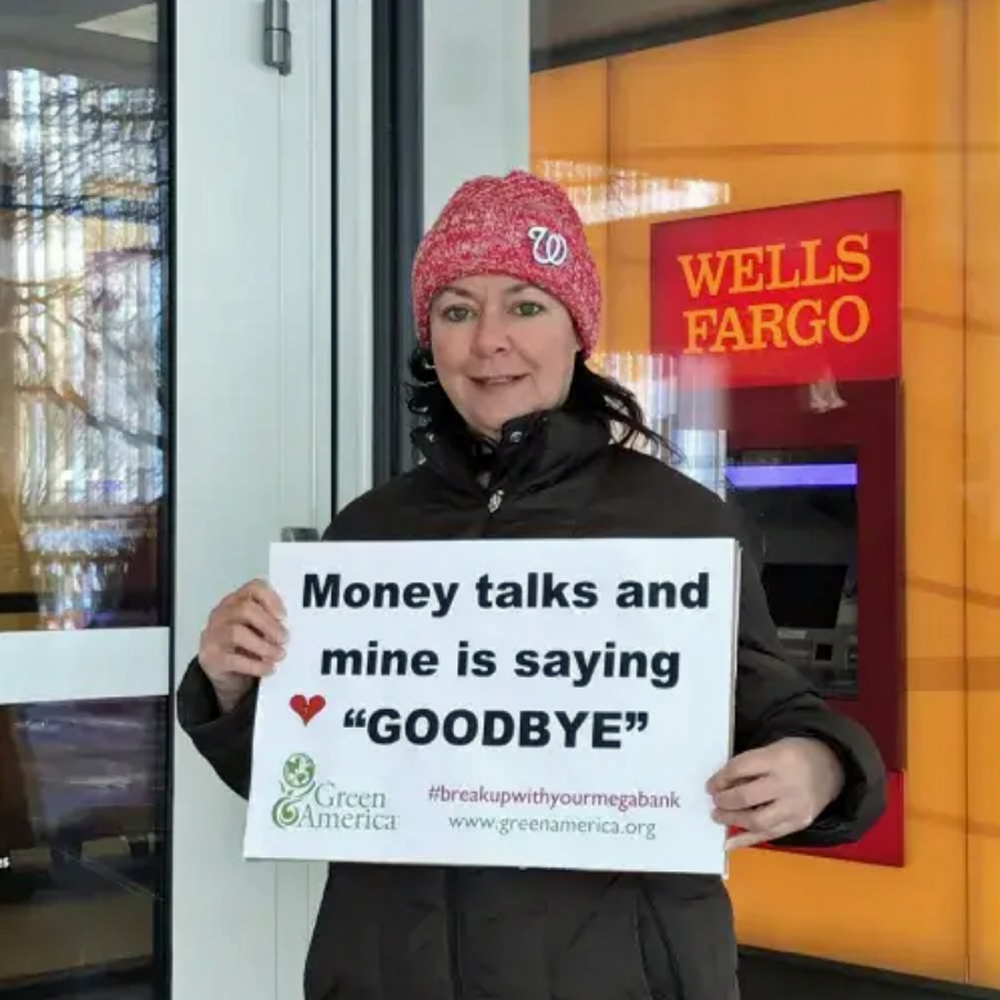When you open a bank account, how do you choose what bank to use? Maybe it’s the one with ATMs close by, or the one your family has always used, or the one that offered you a good deal on a product. But green financing is crucial to an ethical economy, and better banking, aligned with your values, is always possible.
Here’s how it works: When you put your money into a bank account, it doesn’t just sit there. The bank uses the money to make loans. Community development banks and credit unions use the money to finance community needs such as small businesses or mortgages. But the biggest banks use the money to finance corporate projects — including disproportionately fossil fuels, factory farms, and weapons of war.
Bankrolling climate chaos
Since the 2015 Paris Climate Accord, when all nations of the world agreed to hold global warming to 1.5°C, the world’s 60 largest banks have plowed $6.9 trillion into fossil-fuel financing, including expansion projects, tar sands oil, Arctic and Amazon oil and gas, offshore drilling, fracking, liquified natural gas, and coal mining, according to the 2024 Banking on Climate Chaos report.
Of those 60 largest banks, nine are based in the United States. Those nine have plowed over $2 trillion into oil, gas and coal operations since the Paris Agreement — about 30% of the world’s total bank funding for fossil fuels — with over $212 billion in 2023 alone.
Because banks use money that people have deposited to make loans, the money deposited in US megabanks is disproportionately used to finance fossil fuel projects.
- Every $1,000 in savings at a U.S. megabank is roughly equivalent to the direct emissions generated by flying from New York to Seattle every year, according to Project Drawdown.
- Just $62,500 at a U.S. megabank could be responsible for as much carbon (about 8 tons) as all the heating, driving, flying, cooling and cooking an average American does in six months, according to Kat Taylor of Beneficial State Bank and Bill McKibben of Third Act.
- On average, $24 of every $100 lent by Wall Street megabanks are repurposed to fossil fuels, according to BankFWD.
Bankrolling factory farms
Since the Paris Agreement, the world’s megabanks have provided $615 billion – over half a trillion dollars – to the 55 largest industrial livestock corporations, according to the Still Butchering the Planet report by Feedback, a European environmental group.
These 55 companies, which represent a fifth of global livestock slaughter, are some of the food system’s largest drivers of climate change, deforestation, human rights and labor violations, pandemic risks, and animal welfare abuses.
Just five of the 55 companies – JBS, Marfrig, Cargill, Tyson Foods, and Minerva – combined cause an estimated 595 million tons of carbon pollution each year, more than the total emissions of the UK and Ireland combined.
Banks providing the most financing to industrial livestock corporations are Bank of America ($28.8 billion), Barclays ($28.2 billion), and JPMorgan Chase ($26.7 billion).
Bankrolling the arms industry
The global financial sector invested at least $1 trillion in the arms industry between 2020 and 2022, according to the Finance for War, Finance for Peace report by the Global Alliance for Banking on Values. Half that amount was from US institutions.
Banks providing the most financing to the weapons manufacturers include Bank of America ($45 billion), JPMorgan Chase ($33 billion), Citigroup ($28 billion), Wells Fargo ($25 billion), and Morgan Stanley ($24 billion).


